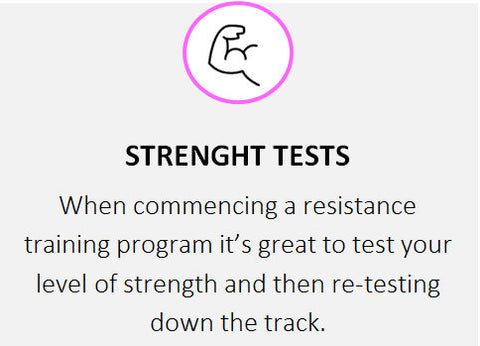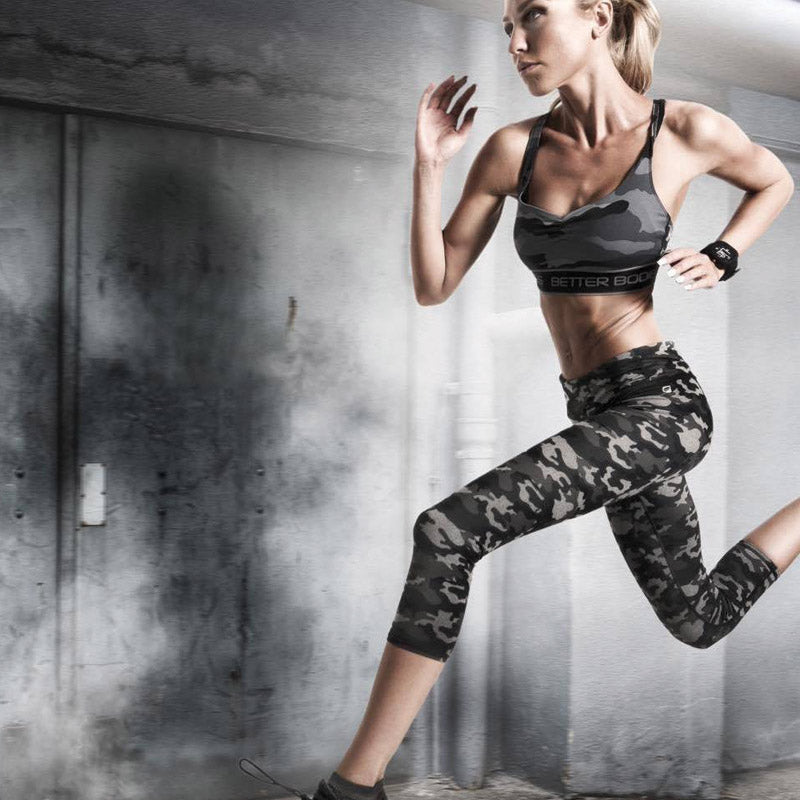Here are some simple tests you can do at home before you commence a new exercise regime. By testing yourself with the same tests at a later stage- you can compare and get a tangible result of your progress. Do it yourself or get a friend to help!
WHY TEST AND MEASURE?
Fitness is a LOT more fun if you are getting results. testing and measuring your starting point will show how much you really progress over a period of time. It's very motivating and gives you REAL figures of what has actually happened and how you have improved.
WHAT TESTS SHOULD I CHOOSE TO DO?
Choose to do tests which your plan will involve. E.g. if you are planning to run as part of your plan you might want to do an endurance test. Remember that warming up may be needed before doing your tests.
SOME DIFFERENT FITNESS TESTS YOU CAN DO






STRENGTH TESTS
UPPER BODY STRENGTH

Push Up Test
How many push-ups can you do? Do as many push-ups as possible until exhaustion. Count the total number of push-ups performed.
Technique: You may do pushups with either toes touching the floor or alternatively the bent knee position. The most important thing is that you do the pushups with the same technique when you test yourself next time. The core should be tight and bum should not point up. Hold a straight position and lower your chest down towards the floor. Push up and repeat.
LOWER BODY STRENGTH


Squat Test (bodyweight or weighted)
How many squats can you do? Do as many squats as possible until exhaustion. Count the total number of squats performed.
Technique: Stand in front of a chair with your feet shoulder-width apart, toes pointing slightly outwards. The chair should be low enough so you will have to squat so your knees bend at 90 degrees. If you are more advanced- you may want to add some weight. Remember to in that case write down to load and re-do the test with the same weight load.

Wall Sit Test
Holding a wall sit is a great test for your lower body strength- especially your quadriceps. For how long can you hold a right angle wall sit? Time it!
Technique: Stand with feet shoulder-width apart. Lower yourself by a wall so your knees bend at a 90-degree angle. Now hold this pose and time it. If you are more advanced- you may want to do a single leg wall sit! This will also indicate if you are stronger in one leg than the other. Start the times when you lift one leg off the ground and stop it upon putting your leg back down. Write down your time.
CORE STRENGTH
Sit-Ups Test
Core strength is important for stability, balance, back support and can reduce the risk of injury. Let's build some abdominal strength! How many sit-ups can you do in 1 minute?
Technique: Lie on the floor on your back with your knees bent. Let your hands rest on your thighs. Strengthen your core and rise up your upper body whilst sliding your hands to touch your knees. Let your lower back remain on the floor. Lower yourself and repeat. Count the number you can do til exhaustion.
Time: 1 minute


Plank Test
The plank test is a great way to measure the strength of your stabilizing muscles and also a great exercise to have as a part of your workout plan, For how long can you hold a plank for? Time it!
Technique: Hold yourself in an elevated position with your forearms and toes to the ground. Your body should be a straight line so watch out for lifting up your bum for relief. Your feel may be apart or close together- as you choose. Time how long you can hold this pose.
AEROBIC ENDURANCE/ CARDIO TESTS
Step Test
Step up with one foot then with the other, then down again one foot after the other. Repeat with other foot first. Keep steady and nice maintained beat. Do this for 3 minutes. At the end of the 3 minutes- measure your heart rate straight afterwards.
Equipment: You need an about 30 cm box or bench that will keep steady when you step on it and a heart rate monitor.
SPEED AND POWER TESTS
POWER TEST
Vertical Jump Test
Start by doing a "standing reach test". Stand by the wall and take note of how high you can reach. Now, stand slightly from the wall and use your whole body to jump vertically up as high as you can. Mark this height with the chalk on the wall. The measurement between your standing reach test and vertical jump test is your result.
Equipment: High wall, bit of chalk for marking
SPEED TEST
Sprint Test
After warming up- record the time it take for you to run a certain short distance. You can choose the distance yourself (10 m, 30m, 50 m etc.)- as long as you do the same distance when you test yourself again.
Equipment: Stop Watch and Marked track for the sprint
BODY COMPOSITION & AESTHETICS TESTS
Mirror/Progress photos
This should trump ALL of the other factors that will be listed. If you are looking leaner in the mirror or through progress photos then DO NOT CHANGE ANYTHING. Progress photos should be taken in a similar light in the same location if possible. This will prevent any inconsistencies in shadows that can mask what’s actually occurring. It’s best to take progress photos facing a window with the camera between you and the window. This will allow for the most consistent light.
Body weight measurement
While we are primarily concerned with fat loss, there is obviously a correlation between weight loss and fat loss over time. Weigh in each day under the same conditions (upon waking and after using restroom) and track your weight daily (using the Weight Loss Log Spreadsheet). A weekly drop of ~.5-1% of bodyweight will ensure that the drops are coming primarily from fat stores assuming you have your bases covered with adequate protein intake and training design/execution (which you will). If you see positive changes in the mirror and/or measurements but not on the scale then DO NOT CHANGE ANYTHING. There is a lot more that goes into bodyweight than just adipose tissue.
Body Measurements
While the mirror and progress photos are GREAT, they are also qualitative in nature. If the scale isn’t moving but say your waist is going down, then you know you are losing body fat and SHOULD NOT CHANGE ANYTHING. Measurements worth taking for tracking fat loss include: - Waist circumference at navel - Hip circumference at widest point
FLEXIBILITY & BALANCE TESTS
FLEXIBILITY TEST
Sit & Reach Test (Trunk and hamstring flexibility)
Remove shoes. Sit on the floor with your feet shoulder width apart against a stair step. Place a ruler between your feet on the step in front of you. Reach towards your toes and the step in front of you. Write down the length on the ruler you reach to and compare at a later stage.
Equipment: Ruler, set of stairs or a sit & reach box
BALANCE TEST
Stork Balance Test
Remove shoes. Place hands on hips. Place one foot on the inside of you other legs knee. Practice balance for 1 minute. Then raise the heel off the floor of the supporting foot and balance on the ball of the foot. Start the stopwatch when you raise your heel. Stop the stopwatch when:
- Hands come off hips
- The supporting foot swivels or moves (hops) in any direction
- The non-supporting foot loses contact with the knee.
- The heel of the supporting foot touches the floor
Equipment: Stopwatch

